Surfer's Guide to Costa Rica: Prime Spots for Thrills
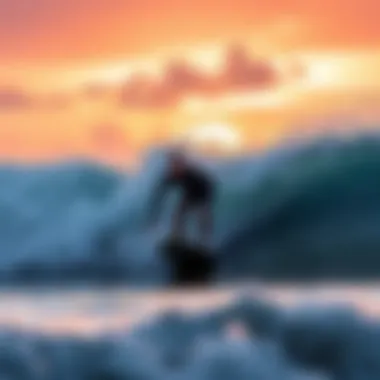

Intro
When it comes to surfing, few places match the allure and charm of Costa Rica. Nestled between the Pacific Ocean and the Caribbean Sea, this Central American gem offers a surfing experience like no other. With a wealth of surf breaks that cater to all skill levels, from the eager novice to the accomplished wave-rider, Costa Rica boasts a diverse array of conditions and cultural experiences that are well worth exploring.
This guide aims to highlight the optimal spots for surfers, delving into the unique characteristics that set each location apart. It will navigate you through a range of essential factors such as the best times to catch a swell, local amenities that cater to surf enthusiasts, and the cultural significance that the waves carry in the lives of those who call this beautiful country home. Whether you're heading out for a weekend getaway or planning an extended surf pilgrimage, understanding these elements can enhance your experience and help you ride the perfect wave.
Let’s dive deeper into the preparation side of things, which is an essential aspect of getting the most out of your surfing adventure in Costa Rica.
Preamble to Surfing in Costa Rica
Costa Rica has become a pivotal player in the global surfing scene, drawing adventurers to its shores with the promise of perfect waves, vibrant culture, and stunning landscapes. This section explores the nuances of surfing in Costa Rica, highlighting its significance and what makes it a prime destination for surfers of all levels.
Overview of the Surfing Scene
Surfing in Costa Rica is more than just a sport; it's a way of life for many locals. From the bustling beaches of Tamarindo to the serene waters of Nosara, each coastline offers something unique. The diversity of wave types ensures that whether you are a seasoned surfer or just dipping your toes in, there’s something for you. The country boasts consistent swell patterns, warm waters, and a friendly community.
You can find local surf schools offering lessons for beginners, while experienced surfers will appreciate the thrill of navigating challenging breaks.
- Diverse Conditions: Various breaks cater to all skill levels.
- Schools and Rentals: Numerous options available for gear and lessons.
This rich surfing culture fosters camaraderie among surfers, making it a welcoming environment for travelers.
Why Costa Rica is a Surfing Hub
The factors contributing to Costa Rica’s reputation as a world-renowned surfing hub are multi-faceted. Its geographical location sandwiched between the Pacific Ocean and the Caribbean Sea creates an unbeatable variety of surf conditions, allowing for year-round surfing opportunities.
Here are a few reasons why Costa Rica is considered a top surfing destination:
- Consistent Swells: With trade winds shaping the waves, Costa Rica receives consistent swells almost year-round.
- Biodiversity: The incredible natural settings enhance the overall surfing experience. Expect to share the waters with sea turtles and dolphins.
- Surfing Culture: The local surf community is both vibrant and supportive, ready to share the best spots and tips with visitors.
- Accessibility: Towns like Jaco and Tamarindo are well-developed, featuring easy access to beaches as well as surf shops and lessons.
Living the surf life here is about more than just the ride; it’s about embracing a culture that celebrates nature, community, and adventure.
"In Costa Rica, surfers don’t just chase waves; they chase a lifestyle steeped in rich experiences and opportunities for renewal."
This section sets the stage for understanding not just where to surf, but how to truly immerse oneself in the incredible environment that Costa Rica offers.
The Pacific Coast: A Surfer's Paradise
The Pacific Coast of Costa Rica presents an intoxicating array of surfing experiences, making it a must-visit for wave riders from all walks of life. This region, with its golden beaches and lush landscapes, offers something for everyone, from beginners to seasoned pros. Each surf spot comes with its own unique flavor, lending itself to different styles and preferences, enhancing the overall thrill of the surf journey.
The Pacific Coast is not just about the waves; it's about the lifestyle intertwined with surfing. Here, surfers ride impressive swells during the day and unwind in vibrant beach towns come sundown. Its significance in this guide lies in showcasing the diversity of wave types and local cultures, which contributes to the unforgettable experiences awaiting surfers.
Tamarindo: Vibrant Surf Town
Wave Characteristics
Tamarindo's waves boast a fusion of consistency and variety, making it a favored hangout for surfers. The beach features both left and right breaks, appealing to riders of diverse skill levels. One standout aspect of Tamarindo's waves is their typically mellow nature, particularly appealing for novices eager to gain confidence. Reliable sets can also provide exhilarating rides for the more experienced.
The unique feature here is the sandy bottom that cushions falls, while the waves tend to peel nicely, allowing surfers to enjoy lengthy rides. However, be mindful that during peak seasons, the beach can get crowded, potentially compromising the serenity of your surf session.
Local Culture and Amenities
Tamarindo is not just a surf spot; it’s a vibrant community packed with amenities catering to surfers. Its cafes serve up the freshest of smoothies, local cuisines, and a buzz that keeps you fueled for your next session. This beach town seamlessly blends relaxation with excitement; you’ll find yoga studios nearby to stretch out those sore muscles after a long day riding waves.
The community vibe is welcoming, encouraging interactions between locals and visitors, fostering friendships that often last long after the surf trip concludes. One thing to note, though—prices can be on the steep side during the high season, so budget accordingly if you wish to dive into this lively culture fully.
Best Season to Surf
Surfing in Tamarindo can be advantageous throughout the year, but the optimal time is typically from May to November. During this period, surfers can expect consistent swells, particularly in the afternoon. The unique aspect of the best surfing season here is the transition from rainy to dry season, influencing wave conditions significantly.
While the dry season offers clean waves, many surfers appreciate the spontaneous swells during rainy days, bringing a different level of excitement to the experience. Just keep an eye on the weather reports if you prefer sunny beach days over tropical showers.
Nosara: Serene and Consistent Swells
Wave Types and Conditions
Nosara is a gem known for its tranquil ambiance and dependable waves, especially suited for those looking to hone their skills. The beach offers primarily beach breaks, which means the waves can vary in size but generally remain friendly to novices, promoting a safer learning environment.
What sets Nosara apart is its reliable offshore winds, often creating perfect conditions to catch waves. However, while the swell consistency is a major plus, the more advanced surfers may find themselves yearning for bigger swells found elsewhere.
Training and Workshops Available
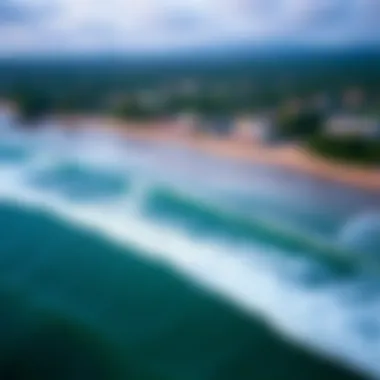
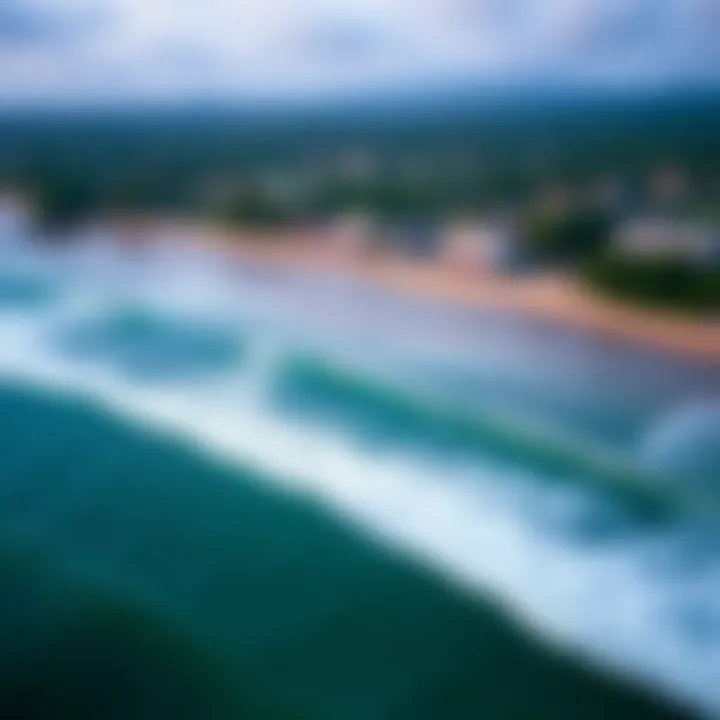
For those aiming to sharpen their skills, Nosara presents a range of structured training options. Numerous surf schools offer workshops with experienced instructors focusing on technique, safety, and understanding the ocean. These schools tend to emphasize a holistic approach to surfing, incorporating mindfulness practices that align with the peaceful surroundings.
One appealing aspect of these workshops is their adaptability to various skill levels, from complete beginners to those looking to fine-tune specific maneuvers. However, be cautious; booking in advance is highly recommended, particularly during peak travel seasons.
Environmental Considerations
Surfing in Nosara also brings an opportunity to engage with environmental stewardship. Numerous local initiatives promote eco-friendly practices among surfers, like minimizing plastic use and respecting wildlife habitats. The community’s commitment to sustainability reflects in their clean beaches and clear waters, enhancing the overall surfing experience.
As a surfer, participating in these initiatives boosts your connection to the locale but requires dedication to proper practices. This commitment not only sustains the beautiful environment but also fosters a greater sense of community among surfers sharing the same waves.
Jaco: For the Thrill-Seeker
Challenging Waves
For the adrenaline junkies, Jaco offers waves that demand skill and determination. The consistent beach breaks can become quite chaotic, especially during the high season when swells exceed three meters. Riders looking for a challenge will find ample opportunity here, with waves that pack a punch and are perfect for practicing advanced techniques.
A unique feature of Jaco's waves is their incredible variety. From left handers to hollow rights, surfers will encounter engaging conditions that can shift daily. However, this can also lead to a more challenging surf environment, with unpredictable currents, making it less ideal for beginners.
Nightlife and Social Scenes
When the sun goes down, Jaco transforms into a lively hotspot teeming with nightlife. This energizing atmosphere complements the challenges of Jaco's waves, creating an appealing blend for thrill seekers. Bars serve up local brews, and surf-themed events pop up frequently, providing opportunities to mingle with fellow surfers.
The vibrant social scene is a significant draw for many, yet it can be overwhelming for those who prefer a quieter experience after a day of surfing. If you’re keen to enjoy both waves and nightlife, plan your schedule to balance the thrill of surfing with relaxing evenings by the beach.
Transportation Details
In terms of accessibility, Jaco makes it easy for surfers to get in and out. Located within a couple of hours from San Jose, transportation is straightforward, whether by car or shuttle. Rental shops are plentiful, and direct routes minimize stress as you navigate to your desired surf spots.
However, be prepared for potential traffic jams, especially on weekends when locals flood in for a ocean getaway. Plan your surf expeditions with a flexible schedule, so you can take advantage of the best surf conditions without getting bogged down.
Pavones: The Longest Left in the World
Wave Length and Quality
Pavones is renowned for its incredible left-hand wave, which is considered one of the longest in the world. Surfers flock here to enjoy rides that can stretch several hundred meters. The wave quality is often top-notch, with consistent swells that allow riders to showcase their skills.
An unique advantage of this quality is that the wave’s rarity draws surfers from across the globe, creating a communal aspect to the experience. Yet, a significant drawback can be its secluded location, requiring a dedicated effort to reach, impacting accessibility during peak times.
Accommodations Nearby
Surrounding the Pavones area is a range of accommodations that cater to surf enthusiasts. From cozy hostels to beachfront bungalows, you’ll find options that fit various budgets. The relaxed vibe in these lodgings enhances the surf experience, allowing for evening chats with fellow surfers about the day’s best rides.
Despite the richness of these accommodations, it is essential to book ahead during peak seasons. The trick is balancing comfort with access to the waves without overextending your budget.
Seasonal Variations
The surfing conditions at Pavones can fluctuate significantly throughout the year, following a cyclical pattern. The optimal time to surf typically spans from April to October, featuring swells that create that perfect ride. However, during the off-season, waves might be less consistent, which may not suit all surfers’ needs.
Recognizing these seasonal variations enables smarter planning, ensuring you secure surf days in ideal conditions. Understanding how the seasonal shifts affect wave quality keeps you one step ahead in your quest for the perfect wave.
The Caribbean Coast: A Different Experience
Costa Rica's Caribbean Coast offers a refreshing contrast to the more bustling Pacific side. While both regions present unique surfing opportunities, the Caribbean brings its own flavor to the surfing experience. This area is defined by its distinct culture, laid-back vibe, and often less crowded surf breaks. Many surfers find the Caribbean’s waves to be a delightful mix of adventure and community, fostering a different atmosphere for those looking to ride the waves in an environment that feels closer to nature.
The Caribbean is known for its consistent swells, particularly from November to April, with a backdrop that emphasizes lush rainforests and vibrant local cultures. Surfers flock here to enjoy the heartiness of Caribbean waves, which can range from mellow rides for beginners to challenging breaks for seasoned surfers. Given the diversity in wave conditions and surrounding attractions, this coast caters to surf enthusiasts of all levels.
Puerto Viejo: A Cultural Melting Pot
This vibrant surf town isn’t just about the waves; it’s about the rich blend of cultures and lifestyles that greet every surfer at the shore.
Reef Breaks and Wave Dynamics
Puerto Viejo is known for its superb reef breaks that present surfing opportunities unlike any other. The conditions here are intimately tied to the local geography. The reef formations create a variety of waves, ranging from gentle swells to more demanding barrels that cater to various skill levels.
A prime example is the famous "German's Point", renowned for its powerful right-hand waves that challenge even experienced surfers. This significant characteristic makes it a sought-after spot in surf circles. While the waves can intimidate novices at times, the dynamic nature of the reef breaks provides a perfect learning platform as surfers can find their rhythm in calmer sections.
Community Vibe and Events
The community vibe in Puerto Viejo is one of the highlights. The welcoming atmosphere transcends typical tourist locales. Here, surfers and locals regularly come together for various cultural events, including weekly live music nights and surf competitions. What’s unique about this culture is the blend of local Afro-Caribbean influences with surf culture, creating a distinctive feel that is both energizing and inclusive.
Engaging with the community not only enriches the surfing experience but also fosters a sense of belonging for travelers. The camaraderie is palpable—new friends can be made on any given day by just hanging out on the beach or participating in local events.
Accessibility Tips
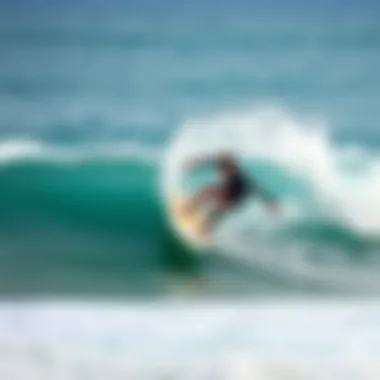
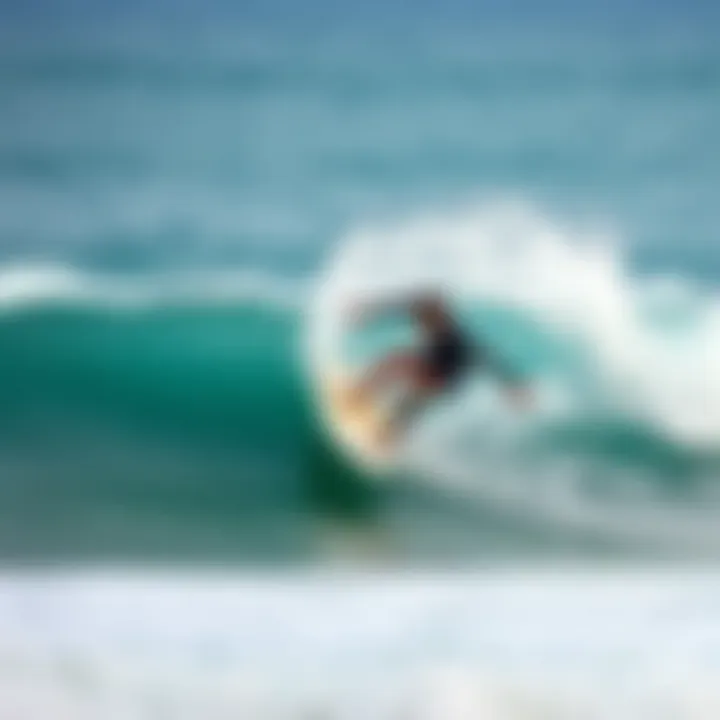
Getting to Puerto Viejo can be straightforward, but it helps to know a few tips to make the journey smoother. The roads can get bumpy, especially if traveling from major cities like San José, but they add to the adventure. Using a rental car or local shuttles can save time and enhance convenience; however, be prepared for scenic but winding routes. Additionally, the town is small enough to explore by foot or bike once you arrive.
For those looking to surf, it’s wise to arrive early, especially on weekends, when the surf crowd can swell quickly. Many surf schools in the area also offer transportation options that can ease the hassle of logistics.
Cahuita: Ideal for Beginners
Cahuita, just a stone’s throw from Puerto Viejo, is a gem particularly appealing to beginners. The pace here is slow, and the welcoming environment fosters an ideal learning space.
Wave Quality for Novices
What sets Cahuita apart is its mellow wave quality. The waves here are generally smaller, making them perfect for novice surfers looking to gain confidence without being overwhelmed. The sandy bottoms offer a forgiving introduction, allowing beginners to practice paddling and catching waves without the worry of harsh reefs or overpowering breaks. This gentle entry into the sport often draws many instructors who appreciate the safe and supportive conditions.
The surrounding environment only heightens the experience, as surfing alongside tropical fish and vibrant coral reefs can be quite enchanting.
Nearby Attractions and Activities
When the surf settles down, Cahuita does not disappoint in providing other attractions. Cahuita National Park, with its stunning coastal trails, invites users to explore nature through walking, snorkeling, or simply relaxing on beautiful beaches. The most notable aspect of this town's appeal is the combination of surf and serene hikes, offering a balanced experience to outdoor enthusiasts. Engaging with local guides can also enhance your experience, bringing to light the area's biodiversity.
Equipment Rentals and Schools
For those who don’t have their own gear, Cahuita features several rental shops that cater specifically to newcomers. Most of these places offer equipment alongside guided lessons, emphasizing safety and skill acquisition. The added benefit of friendly staff ensures a smooth rental process. This establishes a supportive environment for those just starting.
While prices can vary, they tend to be affordable compared to other tourist hotspots, making Cahuita an even more attractive place for novice surfers who might want to dip their toes into the ocean without incurring hefty costs.
Surfing Conditions: What to Expect
Understanding surfing conditions is essential for anyone looking to enjoy the waves in Costa Rica. The interplay of weather patterns, wave seasons, and ocean swells significantly affects the surfing experience. Gaining insights into these elements helps surfers better plan their trips and choose the right times for specific locations. Optimal surfing conditions not only enhance the experience but also contribute to safety, skill development, and enjoyment on the water. Knowing how the weather and waves change throughout the year can mean the difference between an exhilarating ride and a disappointing day stranded on the beach.
Wave Seasons and Weather Patterns
Surfing Seasons Overview
Costa Rica is regarded as a prime destination for surfers throughout the year. Still, understanding the surfing seasons is vital for maximizing your time in the water. Generally, there are two main seasons: the dry season from December to April and the rainy season from May to November. The dry season is characterized by consistent offshore winds and solid swells. This makes it a popular choice among surfers, as conditions are often ideal for various skill levels. Surfers flock to regions like Tamarindo and Jaco, where wave quality remains excellent, and the weather is pleasantly sunny.
The unique feature of the rainy season is that although it brings more rain, the surf can be incredible. The ocean becomes more dynamic, and regions on the Caribbean side, like Puerto Viejo, can offer some remarkable waves that are less crowded. This is a double-edged sword; while you might score fantastic surf, the weather unpredictability can disrupt your plans.
Impact of Weather on Surfing Conditions
Weather plays a significant role in determining the quality of surf on any given day. Wind patterns, swell direction, and precipitation all have their say. For instance, offshore winds are typically preferred because they help to groom the waves, leading to cleaner rides. Surfers should also pay attention to how different weather conditions affect various spots. Hot sun at Jaco can lead to fun, rolling waves during the morning, but as the day progresses, strong onshore winds can create choppy conditions, impacting the surfing experience.
Rainfall can affect water quality, especially after heavy storms, which can lead to dangerous surf conditions and poor visibility. If you’re surfing during the rainy season, you must keep in mind that the forecasts can change quickly. In this aspect, one could argue that knowledge and preparation can turn potential traps into opportunities for epic adventures.
Monthly Breakdown of Ideal Surf Days
Each month of the year brings its own set of surfing possibilities. December heralds the onset of consistent swells, while January and February are often considered the peak months, thanks to the offshore winds both offshore and south swells that lead to perfect conditions in popular surf zones. By March, the beaches can get a bit busier, but often, the waves remain fantastic.
The rainy season starts in May, and while it's true that June can bring rough surf, the months following can be a hidden gem for those willing to embrace the elements. Many surfers find that September and October provide some of the best and least crowded surfing days along the Pacific coast as experienced surfers take advantage of the influx of swells typically seen during this timeframe.
Consistent knowledge of these seasonal changes can empower surfers to catch the best waves at the right time.
Overall, equipping yourself with an understanding of surfing conditions enables you to navigate Costa Rica’s diverse coastline effectively. Each region has its own characteristics that flourish at specific times of the year, and with careful planning, you can ensure an unforgettable surfing adventure.
Practical Considerations for Surfers
When preparing for a surf trip to Costa Rica, it’s crucial to consider the practical aspects that can make or break the experience. This section addresses essential details such as surfboard rentals, travel options, and accommodations—key factors assisting surfers of all experience levels in enjoying their time in this surfing haven. Addressing practical considerations not only ensures convenience but elevates the overall surf experience, enabling surfers to focus on riding those exhilarating waves.
Surfboard Rentals and Gear
Rental Shops and Pricing
Finding the right gear before hitting the waves is paramount. Costa Rica boasts numerous rental shops scattered throughout popular surf towns, making it easy for surfers to access a range of boards. The prices typically range based on board type and length, but on average, you can expect to pay between $10 to $30 per day.
Many shops such as Witch's Rock Surf Camp in Tamarindo or Del Mar Surf Camp offer not only rentals but also additional services like repairs and storage. A key characteristic of these shops is their local expertise, allowing for personalized recommendations. This local insight can be a tremendous advantage for navigating the varying surf conditions across the coast. However, during peak seasons, wait times might be longer, and it's often a good idea to book ahead, offering peace of mind before an adventurous day.
Recommendations for Different Skill Levels
Surfboard rental shops often cater to a range of skill levels. From beginner longboards to advanced shortboards, these options ensure every surfer finds a suitable equipment match. Beginners benefit from soft-top boards that provide more stability and safety—ideal for learning and gaining confidence.
For those more experienced, high-performance shortboards are readily available, enhancing maneuverability and speed on bigger waves. This tailored approach helps surfers to not only enjoy their time in the water but also improve their skills as they engage more suited equipment. Each board has its unique advantages, and picking the right one based on skill level can significantly impact surfing performance.
Travel and Accommodation Options
Transportation from San Jose
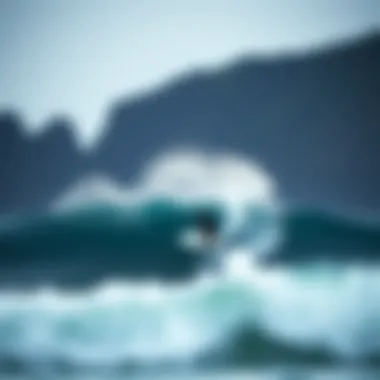
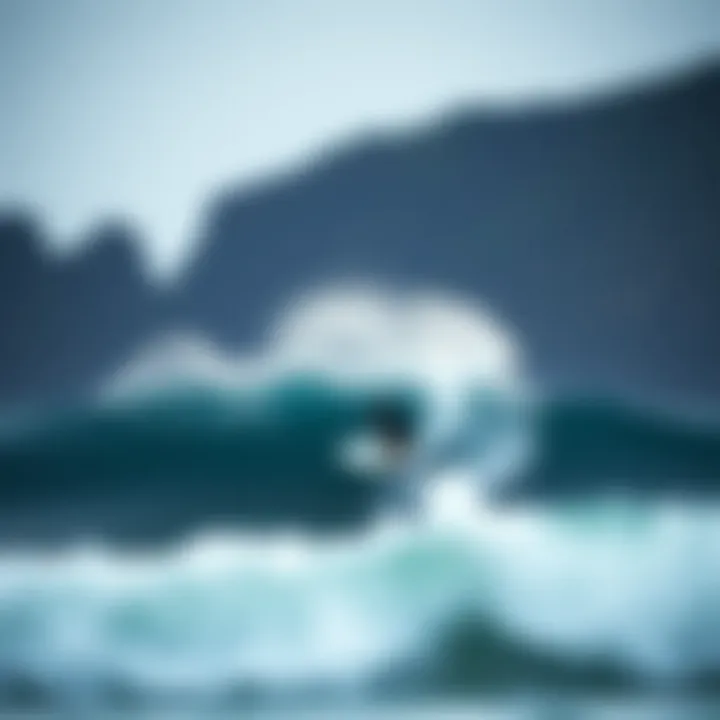
Reaching Costa Rica's famed surf spots typically starts from San Jose, the capital city. There are multiple transportation options including shuttle services, rental cars, and public buses. A rental car provides the greatest flexibility to explore various surf breaks at your own pace, but do note that navigating through local traffic can be a challenge.
Shuttle services offer a more relaxing way to journey to your destination without the hassle of traffic. For instance, private shuttles such as Interbus or Gray Line provide reliable service from San Jose to popular areas like Tamarindo. However, booking these in advance is essential, especially during holidays.
Nearby Lodging Choices
Once the surf destination is set, finding suitable accommodation becomes the next step. Each surf town in Costa Rica typically offers diverse lodging options ranging from budget hostels to luxury resorts. In Tamarindo, for instance, Hotel Tamarindo Diria offers beachfront views, while more budget-friendly choices like La Oveja Negra provide a vibrant social setting for travelers.
Choosing the right lodging can enhance the travel experience, as staying close to the breaks saves time and allows surfers more opportunities to catch those early morning waves. However, keep in mind that accommodations tend to fill up during peak surf seasons, so reserving in advance is a wise move.
Surf Camps Overview
Engaging in a surf camp can elevate the surfing experience even further. Many camps provide all-inclusive packages that combine accommodation, meals, and surf lessons tailored to your skill level. For example, the Surf Camp at Nosara offers structured lessons along with guided retreats focusing on technique and ocean awareness.
One of the standout advantages of surf camps is community; they create an environment for like-minded individuals to connect, share experiences, and inspire each other. They often cater to all levels, allowing newcomers to learn alongside seasoned surfers. However, this intensive format might not be for everyone, as they typically follow a fixed schedule, limiting spontaneity.
In summary, considering various practical elements of surfing in Costa Rica can greatly enhance your experience. From understanding gear and rental shops to scouting transportation and accommodation options, each aspect plays a significant role. Planning ahead ensures you seize the thrilling opportunities that await.
Cultural Insights and Etiquette
Cultural awareness and respect are gears that drive the surf scene in Costa Rica. Surfers from across the globe are drawn not only by the waves but also by the rich tapestry of local traditions and the close-knit surfing community. Understanding the cultural nuances can make a tangible difference in your overall surfing experience. Acknowledging the local customs and the mindset of the surfers who call these waters home fosters goodwill, enhances safety, and allows for a deeper connection with the beautiful surroundings.
Interacting with Local Surfers
Understanding Local Surf Culture
Embracing local surf culture is not just about catching waves; it's about immersing oneself in a lifestyle that has been shaped by generations of surfers. Every beach has its own rhythm, characterized by the personalities of local surfers, their shared stories, and their approach to life on the water. When you’re chilling in a nearby bar or watching the waves roll in, take the time to listen, ask questions, and be genuinely curious about their experiences. It adds depth to your journey.
One key characteristic of Costa Rican surf culture is the strong sense of community. The locals are often very welcoming towards visitors who show respect and appreciation for their home. It’s essential to learn a few basic phrases in Spanish, as this simple gesture can bridge gaps. Engaging with locals can lead to discovering secret surf spots or lesser-known breaks that are off the beaten path. However, it might also present challenges, such as language barriers or misinterpretations of surf etiquette.
"Local surfers, whether they are in Jaco or Nosara, appreciate when you respect the waves and their surf time. A little courtesy can go a long way in building friendships."
Respecting Riding Etiquette
In the world of surfing, etiquette can be the difference between a good time and a clash that spoils the fun. Unlike other sports, surfing adheres to unwritten rules that dictate who rides which wave and when. The basics include waiting your turn, not dropping in on someone else’s wave, and ensuring you don’t interfere with another surfer’s ride. Not only does this cultivate a harmonious environment, but it also enhances safety for everyone in the water.
Understanding and respecting these unwritten rules is a hallmark of being a good surfer, and it reflects on your character both in and out of the water. Many surfers in Costa Rica hold their local surf spots dear; hence, any disrespect can lead to negative sentiments. Be mindful of the locals and consider your actions carefully. From not paddling for a wave that someone is already riding to ensuring you don’t hog prime surfing real estate, these small practices greatly contribute to a positive surf culture.
Environmental Responsibility While Surfing
Being an environmentally conscious surfer enhances not just your experience but also helps protect the beaches and waters you enjoy. This responsibility extends beyond just a personal level and impacts the future of surfing in Costa Rica. Not only do surfers enjoy waves, but they also bear the responsibility of conserving the natural beauty that brings so many to these shores.
Sustainable Practices
Adopting sustainable practices is crucial for preserving the pristine beaches and surf spots of Costa Rica. Simple actions, such as using reef-safe sunscreen and picking up after yourself, can have far-reaching effects. Taking care of your environment is part of a surfer’s identity. Many local companies, like Soda Tapia in Tamarindo, are making strides to promote eco-friendly practices. They show that tapping into sustainability doesn’t mean compromising on quality or fun.
Another significant aspect is minimizing plastic use. Opting for reusable water bottles and bags not only reduces waste but also supports the local businesses that are conscious of their ecological footprint. This commitment to sustainability underscores the bond between surfers and the environment, ensuring that future generations can enjoy the waves as you do.
Local Conservation Efforts
Community-led conservation initiatives play an essential role in protecting Costa Rica's delicate coastal ecosystems. By engaging with local efforts, such as those managed by the non-profit organization "Asociación de Desarrollo Integral" or even participating in beach cleanups, you contribute directly to maintaining the surf spots you cherish.
These actions amplify the message that surfing is not just a sport but a way to engage with the environment. They also create opportunities to connect with like-minded locals and other travelers who share the same values. While every surf session offers a chance to ride the waves, it's essential to also dedicate time and effort to preserving the beauty that surrounds you.
Ending: Final Thoughts on Surfing in Costa Rica
Surfing in Costa Rica is not just a sport, it’s an experience that binds together the vibrant local culture and the awe-inspiring natural landscape. This conclusion serves to recap the remarkable qualities this surf destination offers, as we’ve traversed through the country’s optimal surf spots. From the lively waves of Tamarindo to the serene breaks in Nosara, each location encapsulates something distinct for surfers of every caliber.
Understanding the unique characteristics of these beaches enables surfers to select their ideal surf environment. Whether one seeks the bustling social scene in Jaco or the tranquil ambiance in Pavones, Costa Rica caters to diverse preferences. The majestic ocean swells here aren’t merely about conquering waves; they weave stories of nature and survival, of community and tradition, that forever stay with those who ride them.
Another essential element worth emphasizing is the responsibility that comes with being part of this rewarding pursuit. Respecting local surfers and the natural surroundings ensures that these paradises remain unblemished for generations to come. Operationalizing the cultural insights and environmental consciousness discussed earlier in the article can elevate the surfing experience into something more profound and sustainable.
Thus, as you plan your next surf trip, keep in mind not just the thrill of the ride but also the cultural and ecological tapestry that makes Costa Rica a beloved surfing haven.
Summary of Key Points
In summarizing, it’s essential to recognize several critical points that have been explored:
- Varied Surf Conditions: Each surf spot offers unique wave dynamics suited to different skill levels. Whether you’re a novice or a seasoned pro, there’s a wave waiting for you.
- Cultural Engagement: Immersion in local customs and surfer etiquette fosters respect and camaraderie with fellow surfers.
- Environmental Awareness: The need for sustainable practices is vital in maintaining the natural beauty and integrity of these surf locales. Consider participating in conservation efforts whenever possible.
- Diverse Experiences: Beyond surfing, Costa Rica’s rich culture, wildlife, and landscapes add layers to your adventure, making your trip a holistic experience.
Encouragement for Future Surf Adventures
As we wrap this up, the essence of surfing in Costa Rica beckons all enthusiastic wave riders to take the plunge into this Central American paradise. There’s a plethora of surf locations waiting to be explored, and each surf brings with it a unique tale.
Remember, whether it’s your first time or you’re a regular, the surf conditions may change but the spirit of adventure remains constant. Embrace the learning curve; every wipeout can be a lesson, and each ride can unlock further depths of enjoyment. Furthermore, don’t hesitate to interact with local surfers; their insights can enhance your experience.
So, grab your board, pack your essentials, and set out on your next surfing escapade. Costa Rica’s magnificent waves and scenic backdrops await your discovery, promising not just thrilling moments but lasting memories that extend beyond the shores. Here’s to catching the perfect wave and soaking in the beauty that this vibrant nation has to offer. 🌊
The ocean stirs the heart, inspires the imagination, and brings eternal joy to the soul.







